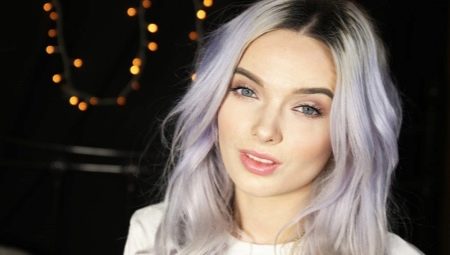Two decades ago, dark roots on dyed blond hair were considered bad form. Timely updating of the blond was the rule, which was never recommended to be violated. And now a blond with dark roots even has his own name - smokey blond and is at the peak of fashion for more than one season!
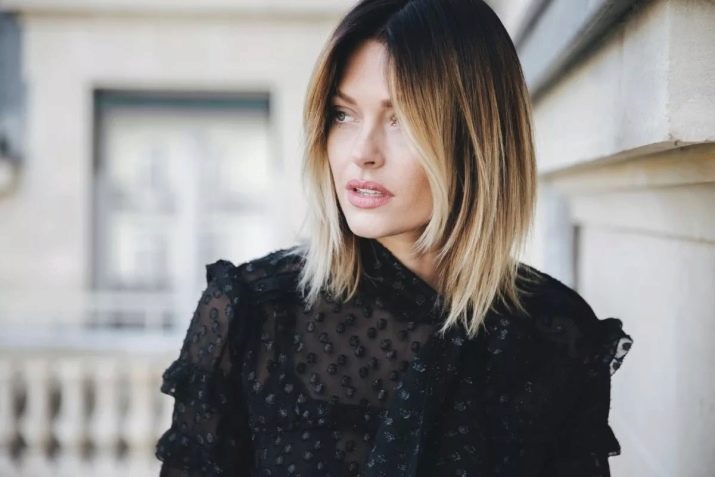



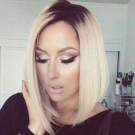
Who is going to?
Light staining with dark roots shade has a lot of advantages:
- gives visual volume to the hair, while not weighing it down;
- there is no need to constantly tint the roots;
- You can periodically (once every one and a half to two months) tint the growing hair in the desired shade;
- it is with the help of smoky blond that it is easiest to painlessly grow your natural hair color;
- Looks great on hair with any length - from short to as long as possible;
- since the hair does not constantly lighten, it heals, becomes more shiny and nourished with useful substances;
- choosing the right shade of the blonde, it is easy to soften hard facial features;
- It looks fashionable and fresh;
- Suitable for any style of clothing;
- decorate a woman at any age;
- Smokey blond does not need special care.
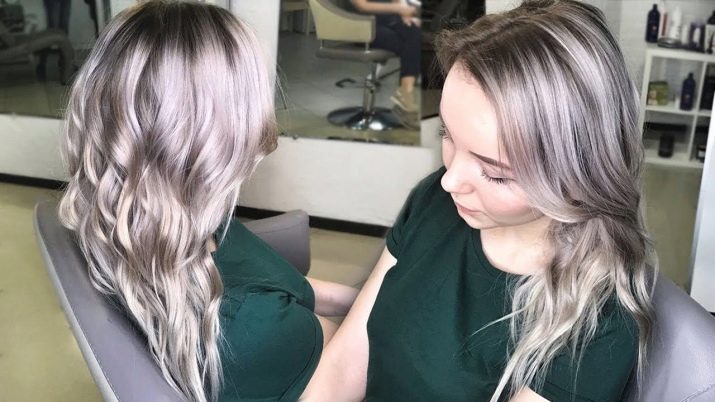
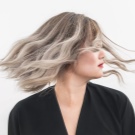



Painting techniques
There are several technologies according to which smokey blond is performed. Each has its own advantages and enjoys well-deserved popularity.
Ombre is a combination of two shades, where part of the hair turns darker (the so-called upper half) and part is clarified (from the middle of the length to the ends). For clarification, you can choose absolutely any shade of light - from platinum to strawberries.Ombre has been holding on for quite some time. It can be performed on hair of any color and any length, which makes the technique universal. However, in order to perform ombre on naturally blond hair, blondes will not need to lighten the ends, but perform a root dimming.
Shades for ombre choose sharply different, one or two tones of the difference is not enough. A sharp color difference gives the hair a visual volume. For example, a pixie haircut, dyed in ombre technology, will make the hair more magnificent in appearance.
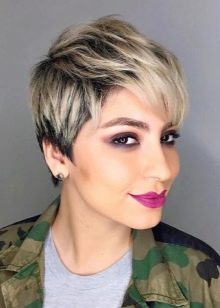
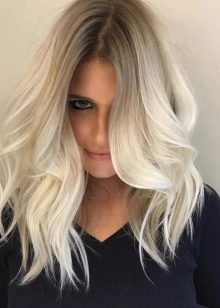
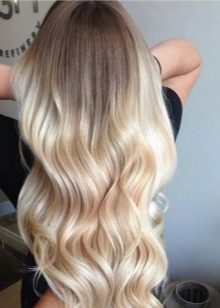
Sombre, in essence, is the same ombre, but softer and smoother. It is also possible to perform on strands of any color. The hue of a cold blonde on a natural brunette, for example, will look very impressive. For sombre, the paint is applied using strokes, you need to step back 4-5 cm from the root area. Then the staining will look natural and natural despite the fact that the differences in shades will remain obvious.
Sombra looks better on hair of medium length and long.
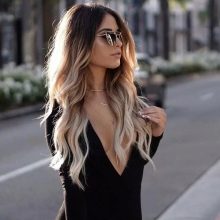
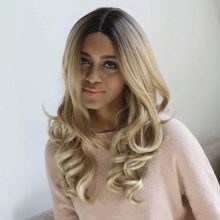

Bronding - the so-called coloring in three colors. Between themselves, they differ in two or three tones. The base of the reservation is always light brown or chestnut. The distance from the roots should not exceed 4 cm. The combination of three shades makes the hair visually thick, voluminous, creating a stunning play of color. Since bronding is a combination of brown and blond, it looks very natural, like beautifully burnt hair.
This technique will decorate not only long strands, but also a medium length
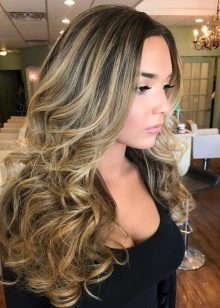

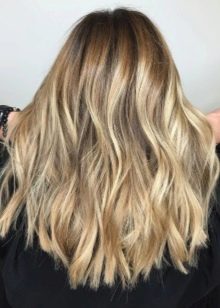
With balalaise, coloring occurs across hair growth. For balayazha use contrasting tones. The hue of the blonde is selected based on the color type of its owner, the shape of her face, as well as the length of the hair. Color transitions can be both sharp and smooth, well shaded. The most spectacular hut looks on long strands processed using graduation. Most often, the hut is performed using Japanese paint. There are two ways to get a hitch:
- fast (twenty-minute), in which medium fixation mousse is applied to the hair, the strands are separated using foil and applied, the application boundaries should be clearly marked;
- long - each strand needs to be fixed with an elastic band, under the tip of each strand you need to put foil, then apply a uniform layer of paint with a brush, and put another layer of foil on top.

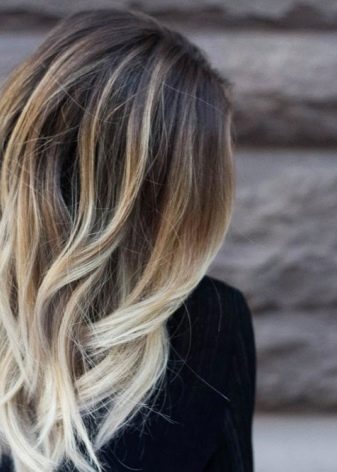
Shatush is another technology that spares hair. This is the so-called "stretch" of color, in which the roots are darkened and the tips are highlighted. The transition from light to dark is stretched along the entire length of the hair. According to the shuttle technology, not all hair is dyed, but thin, randomly taken locks in large quantities. At the same time, it is necessary to step back from the roots significantly, which makes the barber a great option for hair coloring for brown-haired women and brunettes.
The only drawback of the shatush is that she looks good only on long hair and medium length. To design a short haircut, you will have to choose a different coloring technique.

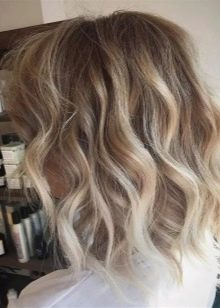
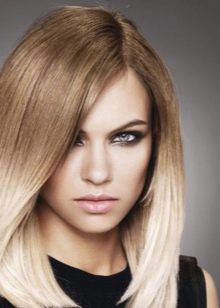
Rutting (or intentional darkening of the roots) is a fresh, literally last season, developed technique of Hollywood stylists. Besides the fact that rooting is very fashionable, it is also easy to perform. First of all, the main color is applied to the hair - platinum, pearls, mother of pearl, and then the roots are darkened. After this, you need to carefully blend the color, so you get a neat transition of the dimming to the main color tone.
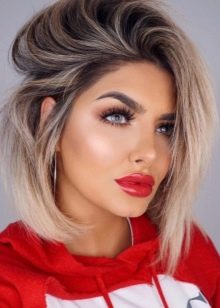
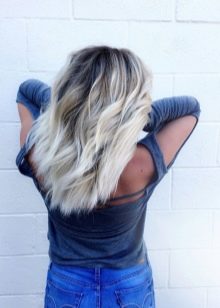
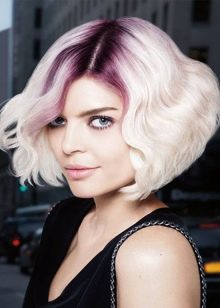
Well, and, of course, we should not forget the most natural of all methods - this is the cultivation of roots. Girls who bleach hair for a long time may simply stop updating the paint on the roots.
The natural color of the hair will grow on its own, and a return to the natural shade will occur completely painlessly. Advice is relevant only for those who want to return the natural color of hair.

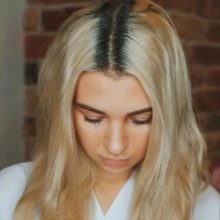
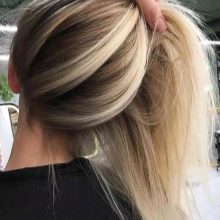
Shade selection
Blond tones - at least five dozen, and each of them can be used for staining in combination with dark roots. To decide which gamut is right for you - cold or warm, there is a simple test that can be called “gold” or “silver”. You need to try on a set of jewelry from each metal, which is more suitable for you, and that gamma is what you need.
If gold suits you, dwell on the warm shades of the blond, and if silver is on the cold.
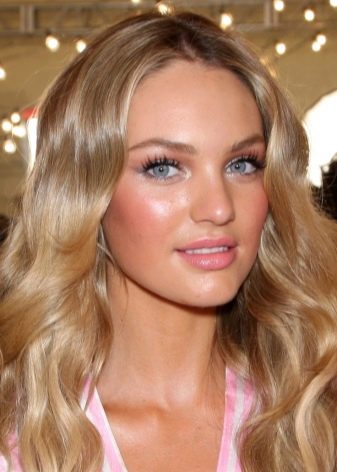
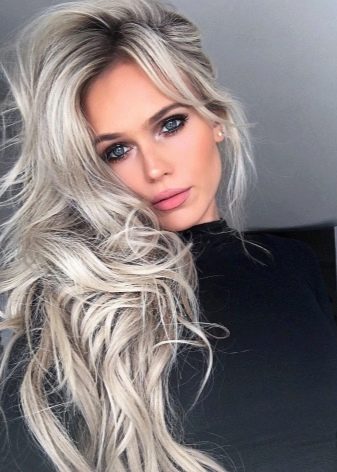
For the winter color type, the cool white tones of the blonde will be optimal shades: platinum, pearls, mother of pearl. In combination with natural dark hair, a very spectacular look will be obtained.
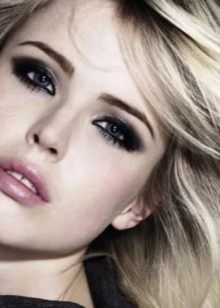
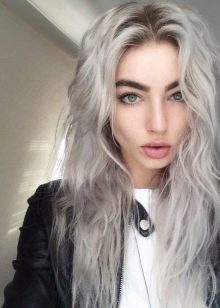
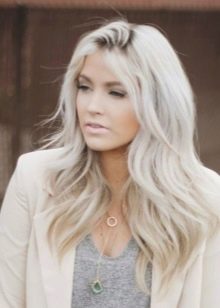
Spring girls with light warm skin, prone to blush, and with clear eyes will go golden, honey, wheat blond. "Spring", like no other, looks as natural as possible in a warm blonde with darkened roots.
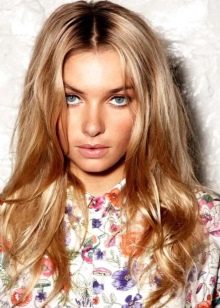


For women of the summer color type, the presence of soft, very thin skin of cool tones is characteristic. Summer ladies all consist of halftones, pure colors are uncharacteristic for them. Neither skin, nor hair, nor eyes have a pronounced color. Summer girls will go to the ash shades of the blonde, which will look on them most naturally.
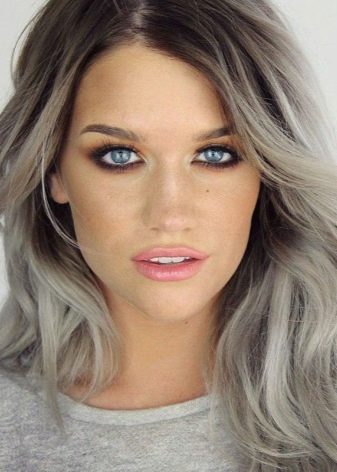
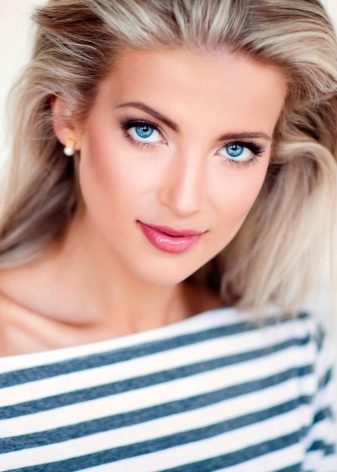
As for the representatives of the autumn color type, they are very suitable for golden, peach, strawberry blond, as well as caramel and vanilla. For some fall girls, the blonde's milky tone will do.
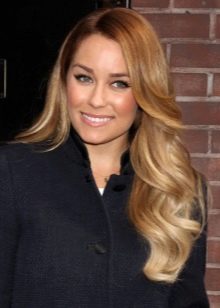
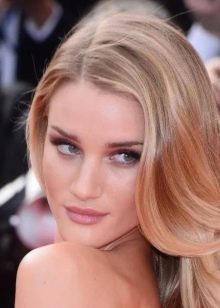
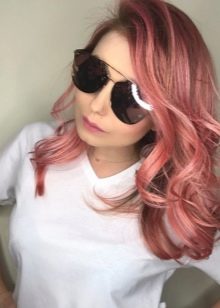
Consider the most popular and relevant shades this season.
Platinum is considered a classic option, which, in combination with dark roots, acquires a sharp-fashioned “grunge” courage. It will be interesting to look like a platinum blonde, combined with two close cold shades in a hut. The "stretched" shuttle looks no less impressive, especially from dark gray to light gray and white platinum. Having chosen a platinum tone, you need to be prepared to regularly use a special shampoo from yellowness so that the shade remains cold. The platinum hue is very demanding on the tone and purity of the skin - any defects against its background will be very noticeable. Therefore, if your skin is imperfect (uneven tone, wrinkles, spots, pimples), choose a pearl shade that will “highlight” the face.
Platinum has the properties of an X-ray, showing all the flaws and making them more noticeable than it would be against a different shade of hair.
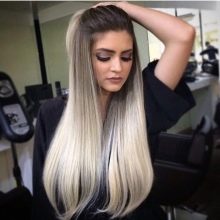

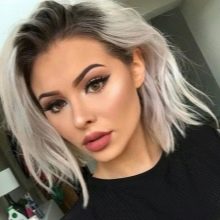
Cold pearl blond is another topical shade. Decorate women - owners of the winter color type. The difference between pearls and platinum is the mother-of-pearl glow, of course, if the hair dyed in this color is healthy. In addition, interspersed with pink and even violet are characteristic of the pearl.
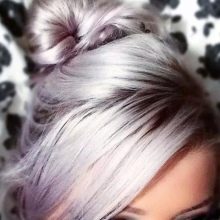
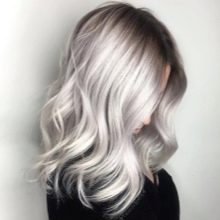
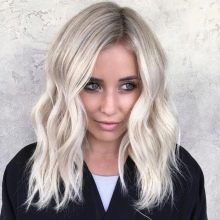
Another trendy shade for cold blondes is ashen. Ashes - the tone is very deep, it is “mixed” with gray, pearl, steel and platinum. Ash looks best on long hair. It is good both solo and in combination with darkened roots.
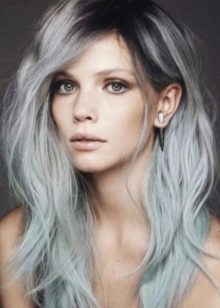
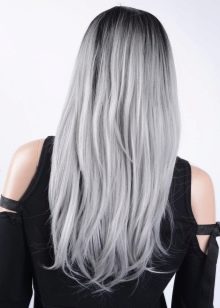
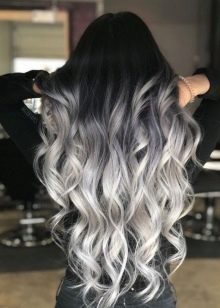
A rare woman can afford a Scandinavian blond, but in combination with dark roots the sample becomes larger.
The blonde’s white shade looks best on women of the classic northern “Nordic” type - fair-haired, blue-eyed, with clean fair skin.
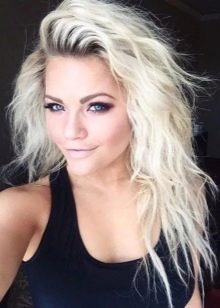
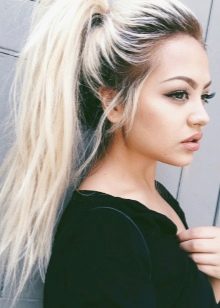
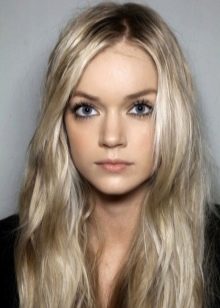
No less fashionable and warm shades of blond - wheat, caramel, golden, honey or bronze. Slightly darker strands at the roots and warm light at the ends - the most natural option, with the effect of burnout. Vanilla blond is warm, but not every woman is suitable.
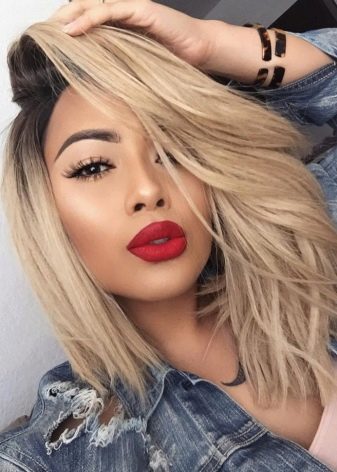
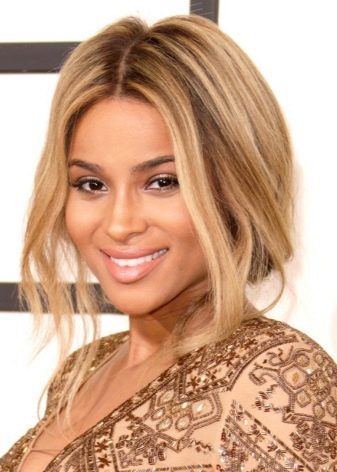
Incredibly relevant strawberry blond (warm pink). Such tinting is more complex, it needs to be updated more often. Pink tones tend to wash out. As for the cold pink, it looks great in combination with platinum.
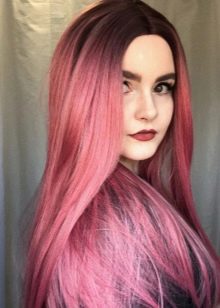
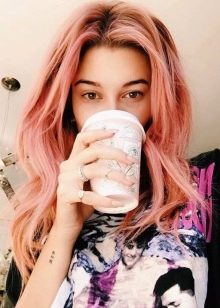
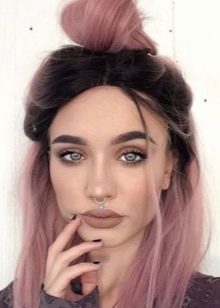
The subtleties of execution
It should not be misled that an ombre or shuttle can be easily made on its own.At home, it is advisable only to grow your natural color if you decide to return to it after lightening.
As for the complex techniques - armoring or shatusha, it is better to do them by contacting a colorizing specialist. Bronding involves masterfully mixing three shades and creating the correct play of light on the hair, for the shatusha, careful shading of the color is necessary to create an inconspicuous transition of a dark tone into a light one. In order for the hut to look right, and not just horizontal stripes of paint, it is necessary to apply paint with thoughtful strokes. Doing it yourself is very difficult, especially in the back of the head. The master colorist in the salon will cope with this incomparably faster and better. Therefore, no matter what technique of partial staining you choose - ombre, sombre or balayazh, do not save on it.
Find a master who specializes in the chosen method, familiarize yourself with his work, consult if such a coloring suits you, whether your hair is healthy enough to lighten. And entrust your head to the hands of a specialist.
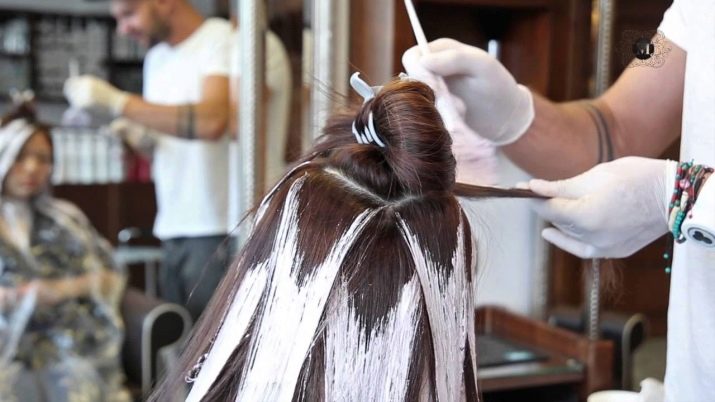
Proper care
Despite the unpretentiousness of a blonde with dark roots mentioned above, it is still necessary to care for him. Since the clarified part of the hair is empty (and the more part of the hair is clarified, the more it is empty), you need to choose the appropriate means for washing and styling.
- At first, after dyeing, wash your hair only with products for dyed (bleached) hair. It is better to use them systematically (once or twice a week), alternating with other means.
- It is imperative to use not only shampoo, but also balm (conditioner), a mask, serum, and tips. Lightened strands require careful care, they need to be nourished and moistened. It is advisable to choose a line with ceramides, proteins, oils and amino acids, so care will become the most intense.
- To curls shone, serums are necessary. The more porous the hair (and forcedly bleached is always porous), the less its shine. Therefore, stock up with appropriate indelible shine products.
- To prevent the appearance of “washcloths” on the head, oil is required. It is important not only moisturizing with masks and serums, but also nutrition, vegetable oils such as shea, argan, almond, grape seed and apricot help in this. Means with natural oils will quickly repair damaged curls.
- Minimize use of a hairdryer and iron. If you can not do without them, use means with thermal protection. In addition, during the period when the sun is most active, you will need care with UV filters to prevent burnout and strands and yellowing on them. And of course, get a wide-brimmed hat!
- To unravel hair, use a comb with rare teeth and try to comb wet strands as little as possible.
- If you visit the pool, use a protective oil, lubricate your hair generously. Otherwise, the lightened part of your hair may turn green. And in the first week after staining, refrain from visiting the pool.
- From natural remedies, use a decoction of chamomile flowers. After washing your head, rinse it with chamomile infusion, so you will add extra shine to the hair.
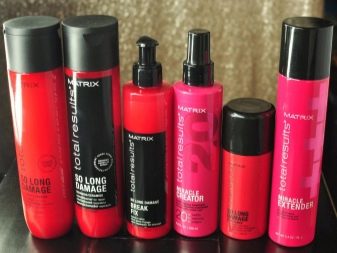

On the technique of shuttles with darkening of the roots, see below.
